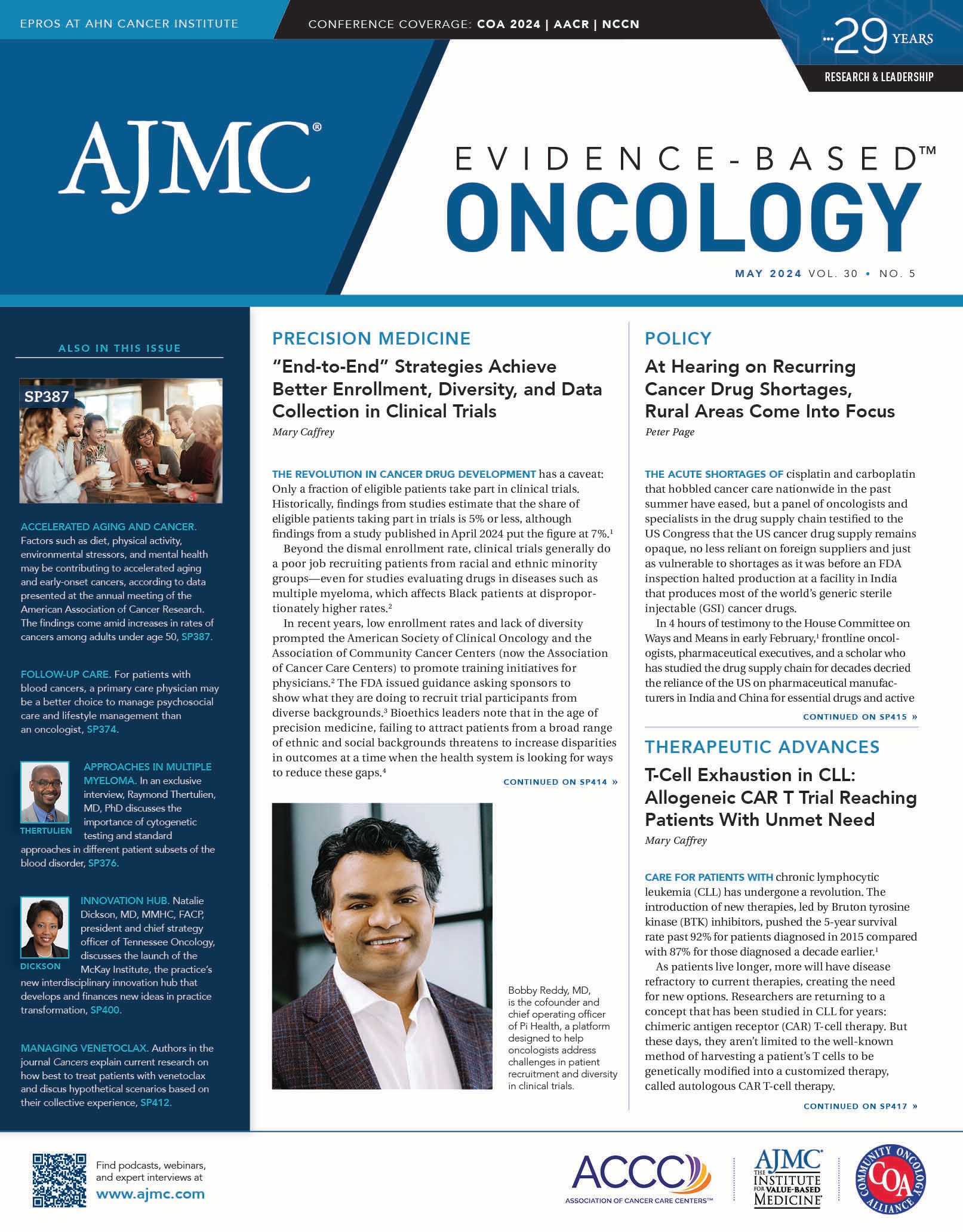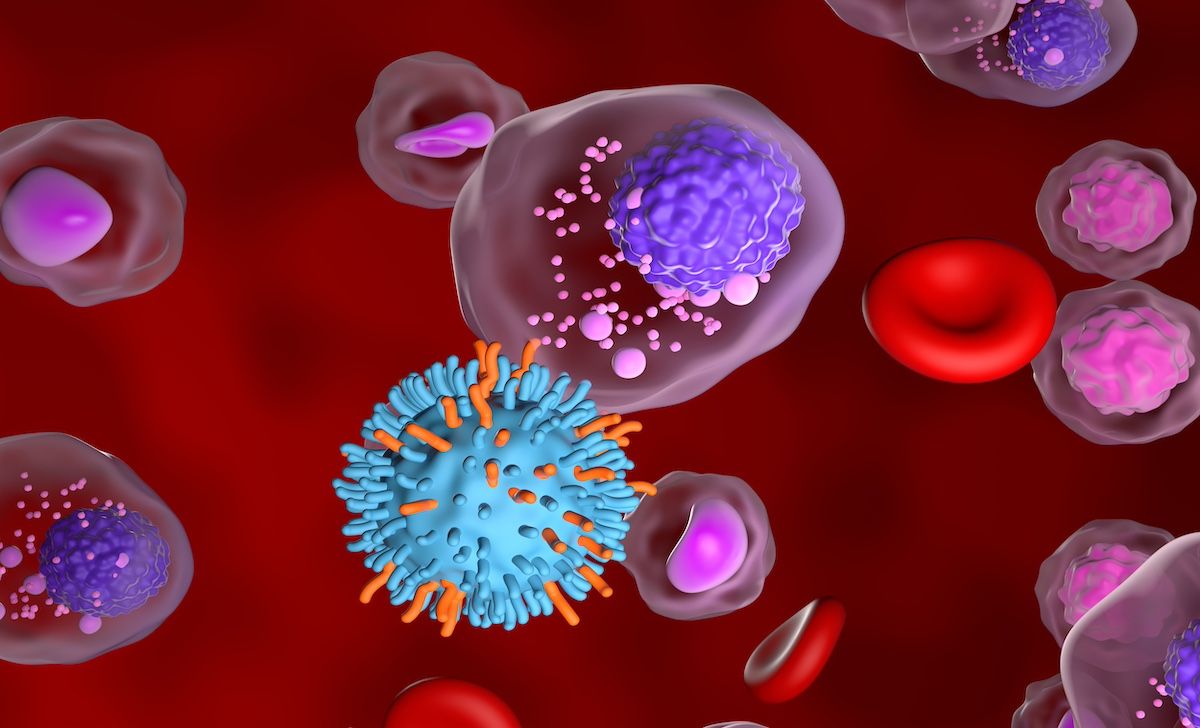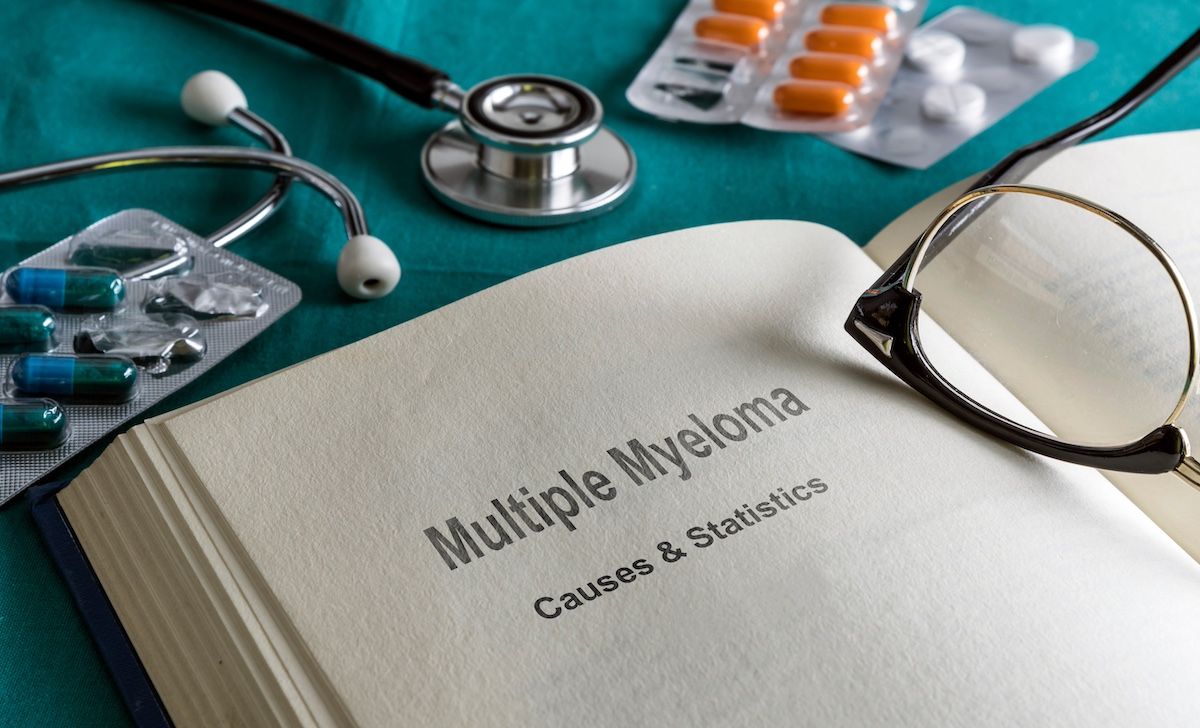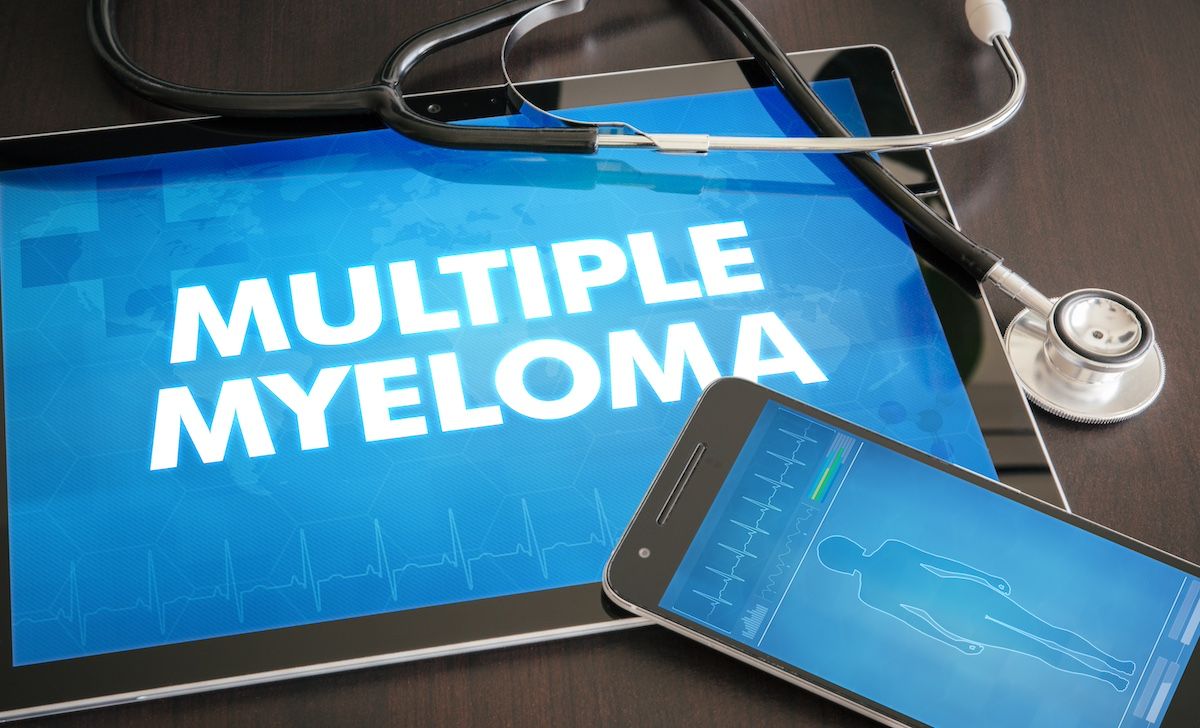Publication
Article
Raymond Thertulien, MD, PhD, on How Abnormalities Drive Treatment Choices in Multiple Myeloma
Author(s):
Testing for cytogenetic abnormalities is an important step in determining the best course of action when a patient presents with multiple myeloma, Raymond Thertulien, MD, PhD, hematologist-oncologist and director of the myeloma and plasma cell disorders program for the Novant Health Weisiger Cancer Institute in Charlotte, North Carolina, explained in an interview with Evidence-Based Oncology (EBO).
He discussed the current multiple myeloma treatment paradigm and the importance of conducting cytogenetic analyses to inform clinical decision-making both in the front line and when patients experience relapse.
This interview has been edited for length and clarity.
EBO: Why is conducting comprehensive cytogenetic analysis, including fluorescence in situ hybridization (FISH) testing, important for patients with multiple myeloma both up front and in relapsed or refractory disease?
Raymond Thertulien, MD, PhD | Image credit: LinkedIn

Thertulien: That is a very good question, simply because started genetic abnormalities, whether by karyotyping or by FISH, have very important prognostic value in multiple myeloma, particularly in the frontline [setting]. But I will address the refractory and relapse setting a little later. In the front line, that’s how we determine whether a patient has standard-risk disease vs high-risk disease or anything in between. Although we don’t talk much about intermediate risk in multiple myeloma, when you look at the second revision of the International Staging System, we have a low risk, we have an intermediate-low risk, we have intermediate-high risk, and we have a high risk. That new staging system incorporates the findings of cytogenetics and FISH.
We know that the patients who have standard-risk disease—meaning no abnormal cytogenetics, normal LDH [lactate dehydrogenase]—do well with the current treatment strategy that we have. They still have to go through induction therapy. If they are treatment eligible, they still undergo an autologous stem cell transplant, and then they proceed with posttransplant consolidation if you are following DETERMINATION [NCT01208662]1 or if you are following GRIFFIN [NCT02874742]2 or if you are following Perseus [NCT03710603].3 Then they go on maintenance therapy—usually, lenalidomide is the maintenance therapy for patients with standard-risk [disease], and they do very well.
On the other hand, we know that if you have cytogenetic abnormalities or FISH abnormalities and you qualify as [having] high-risk [disease], then the prognosis is not as good as for patients who have standard-risk disease. Determining this up front can allow the myeloma physician to choose a proper treatment strategy that will address the high-risk disease vs the standard-risk disease. Why is that important? Well, we know that induction therapy is important. And now, based on the GRIFFIN and the PERSEUS data,4 a quadruplet therapy including an anti-CD38 is standard of care whether you choose daratumumab or isatuximab [for which] we now have data in the front line,5 plus RVd [lenalidomide, bortezomib, and dexamethasone], CyBorD [cyclophosphamide, bortezomib, and dexamethasone], KRd [carfilzomib, lenalidomide, and dexamethasone], VTD [bortezomib, thalidomide, and dexamethasone]. All these are being used in some way or another to treat patients in the front line. Obviously, in the United States, we favor daratumumab-RVd currently as a quad for induction therapy. For the patients who [have] very high-risk [disease], if you look at some of what my colleagues are doing, some patients are doing the MASTER trial [NCT03224507] of dara [daratumumab]-KRd,6 for example.
Therefore, it does have value, particularly after transplant. Do you use a consolidation therapy? And if you’re going to use consolidation therapy, for how long? Do you do it [for] 2 cycles according to GRIFFIN [data], or do you do a longer period of therapy according to Perseus or IsKia [NCT04483739] [data]?2,3,7 The Perseus data [are] essentially reiterating phase 3 GRIFFIN [data]—it’s dara-RVd vs RVd. They have very complicated posttransplant consolidation and extended consolidation, and they also have multiagent maintenance, and most providers who are treating high-risk disease tend to use multiagent maintenance therapy as opposed to single-agent lenalidomide. So it has that much importance in determining up front whether a patient has standard-risk disease or high-risk disease.
In the relapsed setting, it also has some value because we know some patients who [have] standard-risk [disease] up front can [experience progression] with higher-risk disease on the basis, for example, of developing gain or amplification of 1q in the relapsed setting. Similarly, you can see some of the other high-risk abnormalities in the relapsed setting. And if you see it, then it can inform the drugs that you use in the relapsed setting, whether you’re going to use a triplet that incorporates carfilzomib and pomalidomide, or now that we’re soon going to have some of the cellular therapies available after their first or second line of therapy, whether you need to go to one of those lines of therapies.
Knowing what kind of disease is coming back, what the patient is [experiencing progression] with, will inform the type of second-line or third-line therapy that you choose for that particular patient to control the disease.
EBO: What are some of the high-risk features that can be identified through FISH testing, and how often do you typically perform FISH testing for patients with relapsing disease?
Thertulien: The question of high-risk disease is an evolving issue in multiple myeloma. We’re still determining what we consider high risk and how to address it. Abnormal cytogenetics and complex karyotypes are considered high risk. In the FISH setting, a lot of the trials that we have only considered t(4;14), t(14;16), and 17p deletion or TP53 mutation as high risk. In some of those trials, they did some post hoc analysis to look at gain of 1q or amplification of 1q. So these are established risk parameters that we have determined [as] high risk vs standard risk.
But we also know that, for example, loss of 1p, particularly homozygous
loss of 1p, is considered high risk. We also know that extramedullary disease tends to behave very aggressively, and therefore, extramedullary disease is considered high risk. Some patients present with MYC translocation, for example; that’s considered high risk. So this is an evolving issue in terms of what we consider high risk.
We also talk about patients [with] ultrahigh-risk [disease] who have 2 of
those high-risk abnormalities. And we know that they behave very aggressively, and the disease tends to come back very promptly after transplant. And of course, we are defining now what we call functional high risk in terms of the time that it takes for the disease to progress or to relapse following, for example, autologous transplant.
Anybody who [experiences progression] within 12 to 18 months of autologous transplant is considered [to have] functionally high-risk or ultrahigh-risk [disease]. All those parameters enter into consideration.
EBO: Updated National Comprehensive Cancer Network guidelines in late 2023 discuss treatment for gain of chromosome 1q abnormalities in multiple myeloma. How should these be addressed?
Thertulien: How we consider 1q in multiple myeloma is also evolving, and we’re still debating which 1q is considered high risk—whether you have 3 copies, which they call duplication of 1q or gain of 1q, or whether you have 4 copies of more, which we call an amplification of 1q. It seems that when you look at the data, what is truly high risk is amplification of 1q when you have 4 copies or more, and duplication of 1q by itself—and we just looked at our personal data here at Novant Health and the outcome after transplant—gain of 1q, doesn’t seem to confer such a high risk. In terms of outcomes for multiple myeloma, it’s when you start having 4 or more copies.
And of course, it’s also the company it keeps. When you have 1q gain or 1q amplification in addition to a 17p deletion, then you have very high-risk disease in that context. When you start having 1q and (t)4;14, you have high risk in that context. But as the data are evolving, we’re finding that having 1 isolated 1q gain—having 3 copies of 1q—does not confer as high [a] risk as we used to think.
When it comes to the 1q abnormality, we know that oftentimes, patients will [experience] relapse, and when you repeat the bone marrow, patients will [experience] relapse now with a gain of 1q or amplification of 1q, and it can be up to 40% in the relapsed setting. That’s why it’s important to repeat the bone marrow, and I tend to repeat the bone marrow at first relapse. We know that patients with 1q, when you look at the data carefully, seem to respond very well to anti-CD38s. So if it is at all possible to add isatuximab or daratumumab in their regimen, that will have value. Again, [this is from] evolving data [and] post hoc analysis, but there seems to be something to the fact that patients with 1q gain or amplification of 1q tend to respond well to anti-CD38s.
EBO: In the current landscape, what is the recommended treatment strategy for patients with high-risk myeloma, ultrahigh-risk myeloma such as double-hit or triple-hit disease, and functional high-risk multiple myeloma in the first line and in relapsed/refractory disease?
Thertulien: Currently, when somebody has high-risk disease or ultrahigh-risk disease, we don’t make that much of a distinction in the up-front setting. We’re still going to be using a quad, meaning an anti-CD38 plus 3 other drugs, and currently the standard is RVd. So we use dara-RVd, and soon, we’re going to have the other anti-CD38, isatuximab, also approved in that setting based on [findings from] the German trials that have been presented at the American Society of Hematology Annual Meeting [& Exhibition] and have been published.8
Some of my colleagues started using dara-KRd, and we have quite a bit of data for that. We have the MASTER data,6 we have the MANHATTAN data,9 [and] we have European data as well, demonstrating very good outcomes for patients [with] high-risk and ultrahigh-risk [disease] treated with dara-KRd.
We do have one trial, the OPTIMUM trial from England [NCT03188172], where they only enrolled patients whom they considered [to have] ultrahigh-risk [disease], meaning that you have to have at least 2 high-risk cytogenetics to enroll in that trial.10 It’s a phase 2 trial, and they did some statistical exercise to compare it with the Myeloma XI [NCT01554852] outcomes, and they used dara-RVd plus cyclophosphamide, so dara-CVRd. They seemed to show some good outcomes for this group of patients.
This is a trial that was dedicated specifically for those patients because they [have] ultrahigh-risk [disease] up front. But it’s early, and we have to wait to see whether, in the long term, those patients do better than other patients whom we consider [to have] high-risk [disease] treated with quads: for example, dara-RVd, dara-KRd, or isa [isatuximab]-KRd. So we have to wait to see whether that will translate into better outcomes, because it’s a phase 2 trial, and comparing it statistically with Myeloma XI [data], we have to wait for true randomized data before we venture [into] treating patients up front with a quintuplet.
References
1. Randomized trial of lenalidomide, bortezomib, dexamethasone vs high-dose treatment with SCT in MM patients up to age 65 (DFCI 10-106). ClinicalTrials.gov. Updated December 18, 2023. Accessed April 16, 2024. https://clinicaltrials.gov/study/NCT01208662
2. Study comparing daratumumab, lenalidomide, bortezomib, and dexamethasone (D-RVd) versus lenalidomide, bortezomib, and dexamethasone (RVd) in subjects with newly diagnosed multiple myeloma. ClinicalTrials.gov. Updated July 27, 2023. Accessed April 16, 2024. https://clinicaltrials.gov/study/NCT02874742
3. Daratumumab, VELCADE (bortezomib), lenalidomide and dexamethasone compared to VELCADE, lenalidomide and dexamethasone in subjects with previously untreated multiple myeloma (Perseus). ClinicalTrials.gov. Updated September 27, 2022. Accessed April 16, 2024. https://clinicaltrials.gov/study/NCT03710603
4. Sonneveld P, Dimopoulos MA, Boccadoro M, et al; PERSEUS Trial Investigators. Daratumumab, bortezomib, lenalidomide, and dexamethasone for multiple myeloma. N Engl J Med. 2024;390(4):301-313. doi:10.1056/NEJMoa2312054
5. Gay F, Roeloffzen W, Dimopoulos MA, et al. Results of the phase III randomized Iskia trial: isatuximab-carfilzomib-lenalidomide-dexamethasone vs carfilzomib-lenalidomide-dexamethasone as pre-transplant induction and post-transplant consolidation in newly diagnosed multiple myeloma patients. Blood. 2023;142(suppl 1):4. doi:10.1182/blood-2023-177546
6. Monoclonal antibody-based sequential therapy for deep remission in multiple myeloma (MASTER). ClinicalTrials.gov. Updated November 24, 2023. Accessed April 16, 2024. https://www.clinicaltrials.gov/study/NCT03224507
7. Isa-KRd vs KRd in newly diagnosed multiple myeloma patients eligible for autologous stem cell transplantation (IsKia TRIAL) (IsKia). ClinicalTrials.gov. Updated September 7, 2023. Accessed April 16, 2024. https://classic.clinicaltrials.gov/ct2/show/NCT04483739
8. Leypoldt LB, Tichy D, Besemer B, et al. Isatuximab, carfilzomib, lenalidomide, and dexamethasone for the treatment of high-risk newly diagnosed multiple myeloma. J Clin Oncol. 2024;42(1):26-37. doi:10.1200/JCO.23.01696
9. Landgren O, Hultcrantz M, Diamond B, et al. Safety and effectiveness of weekly carfilzomib, lenalidomide, dexamethasone, and daratumumab combination therapy for patients with newly diagnosed multiple myeloma: the MANHATTAN nonrandomized clinical trial. JAMA Oncol. 2021;7(6):862-868. doi:10.1001/jamaoncol.2021.0611
10. MUK nine b: OPTIMUM treatment protocol (MUKnineb). ClinicalTrials.gov. Updated May 25, 2022. Accessed April 16, 2024. https://clinicaltrials.gov/study/NCT03188172
11. Kaiser MF, Hall A, Walker K, et al. Daratumumab, cyclophosphamide, bortezomib, lenalidomide, and dexamethasone as induction and extended consolidation improves outcome in ultra-high-risk multiple myeloma. J Clin Oncol. 2023;41(23):3945-3955. doi:10.1200/JCO.22.02567






